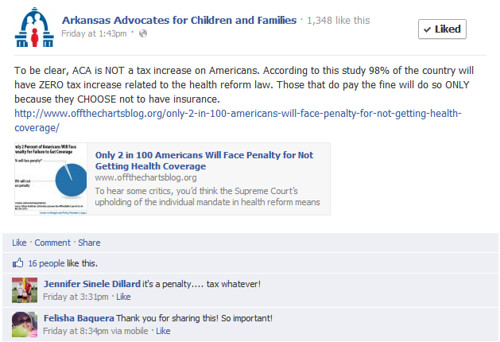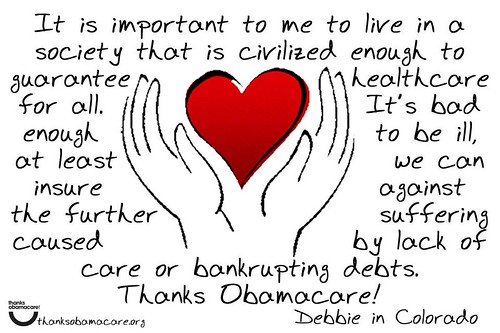As part of my work at the Packard Foundation this year, I’m honored to be working on a project called “Friending the Finishline,” a group of children’s health advocates who are working together on a peer learning exchange to discover how to best use Facebook and other social networking tools to advance their work in children’s health. One area of challenge: balancing strategic communications with spontaneity of social media. The spontaneous part is all the organic stuff, including relationship building, maintaining light touches and connections with your network until there is a moment of opportunity, being nimble and adaptable, and well, being social.
However, these grantees also have to integrate the use of social media into a strategic communications effort that will help further their work towards policy change to support children’s health care coverage. The early results like learning or engagement – the spontaneous stuff as Allison Fine likes to call it — are not always valued. That’s because boards or senior management (or funders) don’t always understand these are part of a strategy that leads to the strategic results. Sometimes these early results are presented out of context and easily dismissed. Therefore it is very useful to show a logical path of results or describe in a logic model. The Glasspocket’s blog has a post from Claire Gibbons, a senior program officer in the Research & Evaluation Unit at the Robert Wood Johnson Foundation that illustrates or describes the change. (KD Paine and I devoted an entire chapter to this topic in our forthcoming book, Measuring the Networked Nonprofit.)
Last Thursday, reported widely in the news, the Supreme Court left standing the basic provisions of the health care overhaul, ruling that the government may use its taxation powers to push people to buy health insurance. The narrowly delineated decision was a victory for President Obama and Congressional Democrats, with a 5-to-4 majority, including the conservative chief justice, John G. Roberts Jr. Those on both sides of the issue were glued to the SCOTUS blog and while there were initial reports from CNN that the healthcare law had been overturned, the surprise victory caused many health care advocates to cheer. This “Window of Opportunity” was a perfect chance to practice the dance between the strategic and spontaneous or becoming an adaptive organization.
This was an historic news event for those who support the Affordable Care Act and an opportunity to use the technique of “newsjacking” which by its nature is spontaneous. David Meerman Scott defines as piggy-backing on timely news. It is done by creating original content that takes advantage of timely events that are getting mainstream media attention and providing your organization’s view or take on the topic and sharing it with your network, including influencers such as journalists and champions. (See David Meerman Scott’s e-book on Newsjacking for more.)
All of these organizations were, of course, very well aware that the decision would be announced, but did not know what the ultimate decision would be. Nonetheless, it would provide a window of opportunity to share content and messages through all communications channels as well as social media. This also provide a chance to couple “newsjacking” with network building – and to learn what work. It was a chance to balance the spontaneous and the strategic of social media. Here’s a round up of what they learned.
(1) Be Flexible and Keep It Simple. Brett Kincaid, Outreach Director, for Arkansas Advocates for Children and Families, said that being organic without too much structure helped them be more effective with their social media integration. It is sort of like the difference between a play that is totally scripted and doing an improv scene where actors know the general narrative but the specific lines are spontaneous and created on the spot.

(2) Use Multiple Channels and Shape Content for each Channel. Kincaid also describes how they used multiple channels, differentiating the content for the channel. “We used Twitter as the decision was being released to send out the basics in plain English (as plain as possible, at least). We then worked out a blog post – based on a framework we’d already established. Once it was published, we disseminated across all our social media channels. During the afternoon we used Facebook to post analyses from partners and Twitter to highlight what ACA is already doing in Arkansas. And we sent our blog post as an email to our entire list.”
(3) Leverage Facebook Person-to-Person Sharing. Texas Care for Kids set up a Facebook event for their rally — they were planning to do this anyway no matter which way the decision went. The event was called “We Support Affordable Health Care” and based on the decision it would have taken a celebratory tone or been a charge to renew commitment to the idea. Says Communications Director Christine Sinatra, “the invites spread like wildfire.” In addition, individuals on staff and advocates made use of their individual profiles on Facebook sharing special cover images that people to use to celebrate.
(4) Figuring out “No Matter What” happens messaging is key. In addition, Sinatra mentions that figuring out their ‘no matter what’ messages was important to mapped out in advance. This included ready-to-go blog posts, FB banners, tweets, etc based on that messaging. This way they had minimal new prep work to do to reflect the decision when it came out. Here’s an example of a brand page banner from First Focus, celebrating the decision:
In addition, they had images that their advocates could share on their Facebook within minutes of the court’s decision, along with the Fact Sheet also posted to their web site.
(5) Prepare and Rally Your Base. Be sure to get your social media ambassadors ready to spread the word, by keeping them in informed and providing content to share. Some nonprofits have set up private Facebook groups just for this purpose that include champions or have formed private groups of peer organizations so materials could be shared. Sinatra from Texas notes that her organization published a blog post on how to write letters to the editor, with a special template for the occasion, and shared that with the people we thought would use it.

(6) Curate Visual and Other Content from Trusted Sources. Content on social channels is increasingly going visual. Visual content like quotes, charts, infographics, videos, photographs, and diagrams often get spread,especially when there is a lot of media attention on the topic. Tara McLain Manthey, Communications Director, Colorado’s Children’s Campaign, mentioned, “Our partners at Thanks Obamacare had a very aggressive campaign yesterday that resulted in Twitter and Facebook followers increasing by several hundred.” The visual content shared on their Facebook Page was shared across Facebook.
Some organizations have been regularly curating visual content on Pinterest, for example, this board from Momsrising on Health Care Stories. In addition, it is helpful to watch newsfeeds and hashtags on Twitter while the news is breaking to capture and share other visuals that may spontaneously burst into social networks. (Here’s an example of some of the creativity that erupted after the Supreme Court decision was announced.)
Anita Jackson, who does social media for Momsrising, said, “We followed SCOTUSblog for breaking news and *immediately* tweeted and posted to FB. We continued to update with quotes from the SCOTUSBlog team. We also did media outreach and placed a couple member stories, interviews and opeds by our ExecDir, and shared several pictures from UpWorthy. I have to tell you– those Upworthy folks know viral.”
What’s the value?
Almost all these organizations reporting getting more likes, shares, and comments on this content. Sarah Eskrich, health policy analyst for Wisconsin Council for Children and Families , shared that they had prepared their top ten list for their blog which led to a huge spike in blog traffic and even heavier traffic for the few days before.
In Wisconsin, they reused some content that had been shared between states to announce the decision right away. It got the highest likes ever on their Facebook page, but have the peer learning exchange she also know how to find content quickly that would resonate, thus saving time.
7. Don’t Forget the After Story Once the news has broken, social media can help leverage the “after story” or the analysis. In Texas, they posted photos from the rally onto their Facebook Page. A great example is this podcast from Momsrising and First Focus talking about health care reform.
Last week was one of celebration, but advocates for health care coverage still have work to do. According to Think Progress, despite the Supreme Court ruling that the Affordable Care Act is constitutional, Republican governors are considering refusing billions in Medicaid funds which promise to insure millions of lower-income Americans without health care. The Court found that while the Medicaid provision is constitutional, the federal government cannot take away federal funds from states that refuse to open the program to more residents. As Momsrising notes in a recent action alert, “Celebrate Health Reform, Help Defend It”
How do you balance the spontaneity of social media with being strategic?

Leave a Reply